The Rope-Washer Pump - Engineers Without Borders UK
The Rope-Washer Pump - Engineers Without Borders UK
The Rope-Washer Pump - Engineers Without Borders UK
Create successful ePaper yourself
Turn your PDF publications into a flip-book with our unique Google optimized e-Paper software.
Workshop Guide:<br />
<strong>The</strong> <strong>Rope</strong>-<strong>Washer</strong> <strong>Pump</strong><br />
<strong>The</strong> main purpose of this guide is to allow an EWB-<strong>UK</strong> university branch to<br />
independently run a rope-washer pump workshop for its members. During the<br />
workshop, members will build a full-size working model of rope-washer pump.
Contents<br />
<strong>The</strong> <strong>Rope</strong>-<strong>Washer</strong> <strong>Pump</strong> .............................................................................. 3<br />
Before You Begin ....................................................................................... 4<br />
Things to Bear in Mind ............................................................................. 4<br />
Questions to Ask ..................................................................................... 4<br />
Do you have enough members ............................................................. 4<br />
Do you have a suitable location ............................................................ 4<br />
Are you going to annoy anyone ............................................................ 4<br />
Where are you going to get your tools ................................................... 4<br />
Materials ................................................................................................... 5<br />
Mounting ................................................................................................ 5<br />
<strong>Rope</strong> ...................................................................................................... 5<br />
Plastic Bottles ......................................................................................... 5<br />
Pipe ....................................................................................................... 5<br />
...And Where to Get <strong>The</strong>m .......................................................................... 6<br />
Useful Tools .............................................................................................. 6<br />
Building the <strong>Pump</strong> ...................................................................................... 7<br />
Mounting ................................................................................................ 7<br />
Pipe ....................................................................................................... 7<br />
Pipe Entrance ......................................................................................... 7<br />
Pulley .................................................................................................... 8<br />
<strong>Washer</strong>s (Bottle Tops) ............................................................................. 8<br />
<strong>Rope</strong> ...................................................................................................... 8<br />
Running the Workshop ................................................................................ 9
<strong>The</strong> <strong>Rope</strong>-<strong>Washer</strong> <strong>Pump</strong><br />
What the method lacks in efficiency and elegance, it more than makes up<br />
for in simplicity – and simplicity should be a highly valued attribute in any device<br />
intended to be deployed in an LEDC environment. Small communities rarely<br />
have the technical expertise required to repair modern equipment, let alone the<br />
money to buy replacement parts. <strong>The</strong> result is reliance on outside help; a<br />
situation that is simply unsustainable.<br />
<strong>The</strong> idea of the rope-washer pump is that it is repairable by untrained<br />
locals, using materials that are readily available. It is capable of lifting clean<br />
groundwater up to 10m. <strong>The</strong> pump’s simple design also makes sealing the water<br />
supply from outside contamination a realistic possibility. <strong>Pump</strong>Aid have had<br />
great success installing such sealed pumps, which are now supplying clean water<br />
to over 1 million people in Zimbabwe and Malawi.<br />
<strong>The</strong> final advantage of a rope-washer pump over other types is cost. As<br />
well as allowing you to run this workshop, the low cost of these units allows<br />
charities’ money to buy many more pumps.<br />
<strong>The</strong> easiest way to describe the concept is via a diagram such as Figure 1.<br />
A vertical ellipse of rope rotates in such a way that its upwards movement is<br />
through a pipe. <strong>Washer</strong>s placed at intervals along the rope are pulled upwards<br />
through the pipe. This motion<br />
lifts water.<br />
<strong>The</strong> design that this<br />
workshop is concerned with<br />
uses plastic bottle caps and<br />
necks as washers. Note the<br />
orientation of the bottle tops<br />
– this is not a bucket pump.<br />
<strong>The</strong>y do not cup the water.<br />
Attempting this would result<br />
in too much friction; the rope<br />
would never move.<br />
Figure 1 – An ideal rope-washer pump
Before You Begin<br />
Things to Bear in Mind<br />
<strong>The</strong> techniques described in this guide are not suitable for any long-term<br />
pump installations, and are simply intended to demonstrate the principles behind<br />
such pumps. This guide is not intended to be prescriptive; the materials and<br />
bodies of water locally available will obviously vary between branches.<br />
Questions to Ask<br />
Do you have enough members<br />
As a rough guide, 10 practically-minded people per pump is about the<br />
right number for a 3-hour workshop. You should consider factors that might<br />
affect this ideal number: things like quality of tooling and complexity of design<br />
can make a big difference.<br />
Do you have a suitable location<br />
Your water source should be a minimum of 150mm deep, with a mounting<br />
point 1-4 metres above. Again, use your judgement: a 1m lift isn’t very<br />
impressive, while a 4m (home-made) pump might struggle. If you don’t have a<br />
handy location, you can make do with large containers filled with water as a<br />
source - but bear in mind that these pumps tend to throw water everywhere,<br />
rather than neatly return it to your container. Whatever your source, a sturdy<br />
mounting-point is a must, as such simple pumps require quite a force to get<br />
going.<br />
Are you going to annoy anyone<br />
Campus security prefer some form of prior warning for projects like this;<br />
politely request that it be allowed. <strong>The</strong>se are useful people to have on your side.<br />
If you think the building phase might get noisy, warn any potential annoyees. A<br />
good way of avoiding any annoyance is to hold the workshop on a Sunday<br />
afternoon. Put down plastic sheeting (bin bags); it will get messy.<br />
Where are you going to get your tools<br />
Have a look at the tools checklist on page Error! Bookmark not<br />
defined.. If you already have your own tools, great. If not, can you borrow tools<br />
from the Engineering Department Depending on how practical your regular<br />
events are, as well as storage space, you may want to consider investing in<br />
some tools for the society.
Materials<br />
Mounting<br />
How you mount your pump is entirely dependent on your location. It<br />
should be sturdy enough to support the weight of a person, provide an upper<br />
axle for your pump, and hold the weight of your pipe. <strong>The</strong> axle itself can be as<br />
simple as large bolt attached horizontally. <strong>The</strong> easiest way to support your pipe<br />
is using saddle clips.<br />
<strong>Rope</strong><br />
If this were a real pump installation, you’d have to decide between cotton<br />
and nylon roping, susceptible to water and UV decay respectively. Since it isn’t,<br />
just use whatever’s cheap and available, though remember you might have to<br />
practically hang on the rope to get your pump turning. Another consideration is<br />
diameter; too thick, and you’ll have to drill large holes in your bottle-caps,<br />
resulting in them failing.<br />
Plastic Bottles<br />
You’ll need to work out how many bottles you need based on the<br />
proposed height of your pump, and a spacing of about 400mm between. At the<br />
risk of patronisation, remember to double this height and take into account the<br />
added rope length at the top and bottom. Sports cap bottles will make your<br />
life a lot easier, as they’re less likely to get caught on pipe edges.<br />
Pipe<br />
Your only real constraint here is inside diameter: it<br />
should be between the diameter of a plastic bottle top<br />
and body, as shown in Figure 2. Within these constraints,<br />
you can do whatever you like. A wider pipe means more<br />
water, but it also means a big increase in pumping<br />
difficulty and overall stresses. <strong>The</strong>oretically, as pipe<br />
radius increases, friction increases twice as fast, and the<br />
volume (weight) of water being lifted increases as twice<br />
the square of the radius. This could result in bottle cap<br />
failure, or a complete seize-up.<br />
You will likely have to cut lengths of pipe down for<br />
transport, making the joining of lengths will be<br />
necessary. Be aware that “push-fit” joints tend to<br />
have a narrower inner diameter than corresponding<br />
pipe, which can (and probably will) cause a complete<br />
seize-up. Duct tape made a fine replacement when we hit<br />
this problem.<br />
Figure 2 - Pipe diameter
...And Where to Get <strong>The</strong>m<br />
Your first port of call should be a local builders’ merchant. <strong>The</strong>y will likely<br />
stock piping, rope, any materials your mount requires, and tools. You should be<br />
able to find suitable piping in the “wastewater” section, and they should stock<br />
cheap, relatively strong nylon rope.<br />
Plastic bottles aren’t difficult to come by. You could ask your members to<br />
keep their bottles, but they’d have to do so for a good few weeks to accumulate<br />
enough. Another good source is sports societies; they tend to go through the<br />
sports cap bottles fairly quickly. If you’re desperate, ask University<br />
administration where they store their collected plastic recycling.<br />
Useful Tools<br />
<br />
<br />
<br />
<br />
<br />
<br />
<br />
<br />
<br />
<br />
Electric drill<br />
A decent set of drill-bits (including spade bits)<br />
Hole-saw drill-bits<br />
Hand saw<br />
Hack saw<br />
Sharp Knife<br />
Lighter<br />
Duct tape<br />
Stanley knife<br />
Epoxy Resin<br />
Plus any tools particular to your design. How many of each tool you need<br />
depends on how many pumps you’ll be building simultaneously.
Building the <strong>Pump</strong><br />
Mounting<br />
<strong>The</strong> first thing you need to construct (or at least design) is a mounting<br />
point. Your design should provide a strong attachment to a base, without<br />
damaging it. If, for example, you had decided upon the location of a bridge over<br />
water, a handrail could make a good base. A typical design is shown in Figure 3.<br />
Figure 3 - An example hand-rail mount<br />
A block of wood is secured using rope to prevent damage to the hand-rail, and a<br />
large bolt provides an axle. Piping is attached using a simple saddle clip and<br />
woodscrews.<br />
Pipe<br />
You should already know the distance between your mounting point and<br />
the surface of the water; cut your pipe such that the lower end is submerged.<br />
Remember to leave at least 150mm between the bottom of the pipe and the<br />
bottom of your water source.<br />
Pipe Entrance<br />
One of the most difficult<br />
problems to overcome during this<br />
workshop is the tendency of the<br />
bottle-tops to snag on the bottom<br />
edge of the pipe, as shown in Figure<br />
4. This will stop your pump dead. As<br />
mentioned on Page Plastic Bottles5,<br />
using sports cap bottles goes some<br />
way towards solving this problem,<br />
but you will need some kind of<br />
attachment to prevent snags. I<br />
suggest you leave it up to your<br />
Figure 4 - <strong>The</strong> fatal snag
members to devise their own solutions, but<br />
if they get stuck, the best solution we<br />
found is shown in Figure 5. A short section<br />
of pipe was glued perpendicular to the end<br />
of the main pipe, to decrease the angle at<br />
which the rope enters the bottom of the<br />
pipe. Note that a section was cut out of the<br />
short pipe to make a glue-able surface. <strong>The</strong><br />
electrical tape shown was only to hold the<br />
joint in position while epoxy resin set.<br />
Not shown here is the later addition<br />
of a small panel at either end of the short<br />
pipe, to prevent the rope from slipping<br />
laterally. We glued the bottoms of two<br />
extra large bottles to either end of it.<br />
Pulley<br />
If the bolt used as the top axle is left<br />
unmodified, it becomes another snagging<br />
point. Again, this is a good issue to let your<br />
Figure 5 - Snag solution<br />
members sort out. <strong>The</strong> best we could do<br />
with the materials and tools available was to create a rough cylinder of wood,<br />
and cut a groove around it for the rope to sit in.<br />
<strong>Washer</strong>s (Bottle Tops)<br />
<strong>The</strong> bottles should be cut so that the resulting washers are as close to the<br />
pipe’s inside diameter as possible, while being able to move freely. <strong>The</strong> best way<br />
to quickly produce large numbers of equal-diameter bottle-tops is to cut a hole<br />
of the right diameter in a small wooden sheet, using a hole-saw drill-bit. <strong>The</strong>n,<br />
members can simply drop the bottle top-first into the guide and mark the correct<br />
cutting line. Junior hacksaws make short work of plastic bottle necks.<br />
Drill through the centre of the bottle-tops using a drill-bit size that will<br />
allow the rope to be threaded through, but not allow knots through.<br />
<strong>Rope</strong><br />
Having worked out the length of rope needed, add half a metre, and cut<br />
using a sharp knife. Nylon rope will fray at the ends immediately, making<br />
threading the rope through drilled bottle-caps very difficult. Use a lighter to melt<br />
the cut ends into a solid point. Tie a knot near one end of your rope, then thread<br />
a washer (bottom-first, to make the second knot easier) onto it, and tie another<br />
knot close to the other side of it. <strong>The</strong> distance you should leave between<br />
washers depends on your lift; there should be a maximum of 6 or 7 washers in<br />
the pipe at any one time, depending on how tight a fit they are.<br />
Put it all together, mount it, cross your fingers and give the rope a pull.
Running the Workshop<br />
Begin the workshop with a short introduction to the pump. An important<br />
part of the introduction is to show how useful the theory of a rope-washer pump<br />
is. <strong>Pump</strong>Aid were kind enough to post me a higher-quality DVD of a video found<br />
on their website, which made the point quite well. Show one of the included<br />
diagrams, and give a brief explanation of each step.<br />
This workshop works very well if members are split into teams; not only<br />
for each pump, but also for each component. For example, one team could be<br />
tasked with solving the snagging issue, one team with the rope and washers,<br />
one team with the mount, and one with the upper pulley. Encourage them to<br />
make improvements and find their own solutions, but keep an eye out for<br />
anything that probably won’t work.<br />
If you want, you can add a T-piece to the top of your pipe, and have a<br />
competition between pump teams, such as a timed filling of a large container.<br />
<strong>Without</strong> a T-piece, water simply goes everywhere, like so:<br />
Images and diagram may be used for educational purposes. For any<br />
further advice or questions, feel free to contact me at ethan.fowler@gmail.com.<br />
I should be keeping that address for a good few years to come.


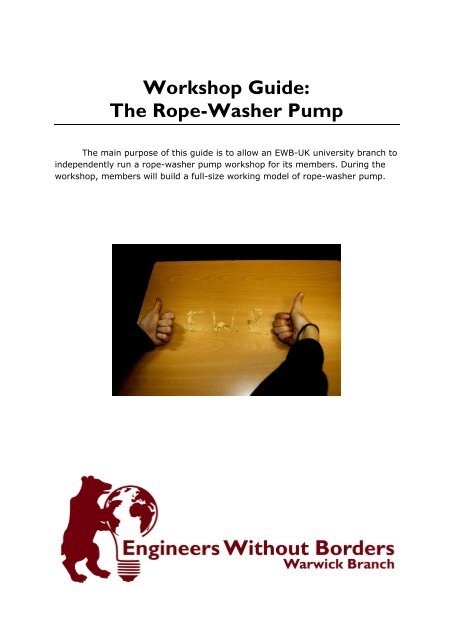
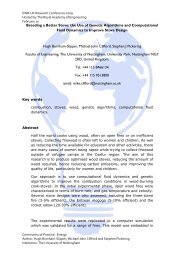

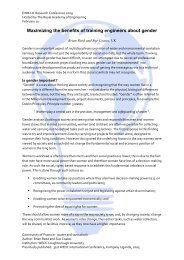

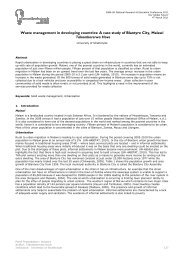

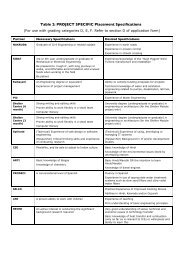


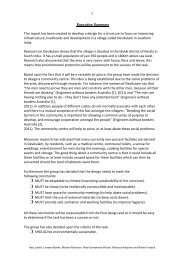

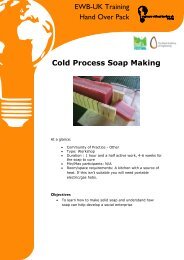
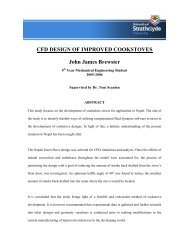

![Ethical Fundraising Guidance[1].pdf - Engineers Without Borders UK](https://img.yumpu.com/36288951/1/184x260/ethical-fundraising-guidance1pdf-engineers-without-borders-uk.jpg?quality=85)